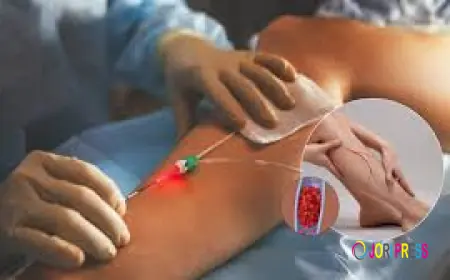Redness and Patchy Skin? Dubai Whitening Prices Detailed
Redness and patchy skin are common concerns that affect both appearance and confidence. These conditions can result from a variety of factors such as inflammation, rosacea, sensitivity, or post-acne healing

Redness and patchy skin are common concerns that affect both appearance and confidence. These conditions can result from a variety of factors such as inflammation, rosacea, sensitivity, or post-acne healing. Sometimes, external triggers like sun exposure or harsh skincare products can intensify the problem, making the skin appear blotchy and irritated. Uneven skin tone is not just a surface issue—it often indicates underlying imbalances that require tailored care and treatment.Let's delve into Skin Whitening Treatment Cost Dubai
Why Skin Tone Becomes Uneven
Skin tone becomes patchy when pigment cells distribute unevenly or when blood vessels close to the surface react to environmental factors. Conditions like sunspots, dryness, acne scars, and dilated capillaries can all contribute to a blotchy complexion. Additionally, overuse of certain products or incorrect skincare routines may worsen sensitivity, leading to redness or pigmentation clusters.
Whitening Treatments for Correcting Skin Imbalance
Whitening procedures are designed to target these irregularities and restore a balanced tone. The goal is not just to lighten but also to even out the complexion by reducing redness, calming inflammation, and minimizing visible discoloration. These techniques help fade spots, neutralize blotches, and bring out the natural glow of the skin.
Benefits of Whitening for Red and Patchy Skin
Treating uneven skin tone through whitening goes beyond aesthetics. When redness is addressed and pigmentation is reduced, the skin appears clearer and more unified. Whitening treatments support the skin barrier, reduce visible signs of irritation, and enhance the skin’s overall texture. The end result is a healthier, calmer complexion that feels just as good as it looks.
What Triggers Redness and Skin Blotches
Redness can be triggered by several factors, including heat, cold, allergies, hormonal changes, or even stress. Skin becomes more reactive when its protective barrier is compromised. In some cases, certain foods or environmental pollutants may also lead to temporary or persistent inflammation. Identifying these triggers is essential for choosing a treatment that brings lasting improvement.
Role of Whitening in Managing Sensitive Skin
Contrary to popular belief, many whitening solutions are designed to be gentle. They work on a cellular level to reduce melanin activity without damaging the outer skin layer. For those with sensitive skin or redness-prone conditions, modern techniques are available that soothe while also correcting pigmentation. This dual action makes whitening a comprehensive approach for restoring balance.
Addressing Skin Sensitivities Holistically
To truly treat patchy and red skin, a complete approach is needed. Whitening targets the visual signs, but consistent care, hydration, and protection help sustain those results. Working with professionals ensures that the skin’s unique needs are met, and that the solutions chosen work in harmony with its natural rhythm.
How Long Does It Take to See Improvements?
Results can vary depending on the depth of pigmentation and the cause of the redness. Some people may begin to notice changes within a few sessions, while others may take longer to see significant transformation. Progress is usually gradual, with the skin appearing calmer, more radiant, and evenly toned over time.
Preparing the Skin Before Whitening
Before beginning any treatment, it’s essential that the skin is in a healthy, non-irritated state. Avoiding harsh exfoliants, direct sun exposure, and aggressive routines can prepare the skin to respond better. A calm and well-hydrated surface improves product penetration and enhances the effectiveness of each session.
Post-Treatment Experience and Expectations
After sessions, skin usually feels refreshed, with early signs of improvement visible in brightness and reduced blotchiness. Redness often begins to fade first, followed by more even pigmentation across the cheeks, forehead, and jawline. Continued maintenance helps reinforce the results and prevent future issues.
Common Zones Affected by Patchy Redness
The face is the most common area affected by patchy skin and redness, especially around the nose, cheeks, and chin. However, some people also experience discoloration on the neck, shoulders, or arms. Whitening sessions can be adapted to suit each zone, ensuring a balanced appearance from top to bottom.
Personalizing Treatments for Better Results
Each person’s skin responds differently, which is why whitening methods are often tailored to individual needs. A thorough skin assessment allows experts to pinpoint causes and design a routine that directly addresses redness and patchiness. This personalization increases both comfort and effectiveness.
Whitening Techniques that Help Balance Tone
There are a variety of techniques used to correct skin tone. Some methods focus on reducing pigment production, while others aim to calm reactive blood vessels and neutralize inflammation. Each technique has its own benefits, but when selected properly, they work together to create a clearer, more luminous complexion.
Skin Whitening Treatment Cost in Dubai
While specific pricing isn’t discussed in this article, understanding Skin Whitening Treatment Cost in Dubai is a common part of planning a personalized skincare journey. Cost may depend on treatment type, frequency, and skin condition. Those considering this approach often find that investing in a long-term skin solution offers more consistent and satisfying results than temporary fixes.
Improvements That Extend Beyond Aesthetics
Whitening not only enhances the way skin looks but also how it feels. When redness and blotchiness fade, skin becomes smoother, softer, and easier to manage. Confidence also improves, and individuals often report greater satisfaction with their overall skincare routines.
Lifestyle Habits That Support Even Skin
Although treatment is effective, it’s important to support results with healthy habits. Protecting the skin from sun exposure, managing stress, and following a basic skincare routine all contribute to longer-lasting brightness. The commitment to care reflects in the skin’s texture and tone over time.
Seasonal Impact on Skin Redness
Weather conditions—especially dry air or humidity—can influence how reactive or red the skin becomes. Understanding seasonal triggers helps in adjusting the skincare approach during colder or warmer months. Whitening programs may also be fine-tuned to accommodate these changes.
Visible Signs of Healing and Balance
As the skin adjusts, one of the first signs of improvement is reduced flushing and fewer flare-ups. The surface appears more uniform, smoother to the touch, and shows less discoloration. Over time, these changes become more permanent with the right maintenance.
Psychological Effects of Improved Complexion
Feeling comfortable in one’s skin has a powerful impact on self-esteem. When people see fewer patches, less redness, and more glow, their confidence naturally improves. Whitening treatments help restore not only skin balance but also emotional well-being.
Conclusion
Redness and patchy skin can disrupt the harmony of one’s complexion, but whitening offers a solution that is both corrective and calming. From reducing pigmentation to supporting sensitive skin, the right approach leads to visible and lasting improvements.
For those seeking long-term solutions, understanding the Skin Whitening Treatment Cost in Dubai and the treatment journey is a valuable first step toward radiant, balanced skin. With care, knowledge, and consistency, it’s possible to achieve a brighter, clearer complexion free from the frustration of blotches and redness.
What's Your Reaction?
 Like
0
Like
0
 Dislike
0
Dislike
0
 Love
0
Love
0
 Funny
0
Funny
0
 Angry
0
Angry
0
 Sad
0
Sad
0
 Wow
0
Wow
0



















































